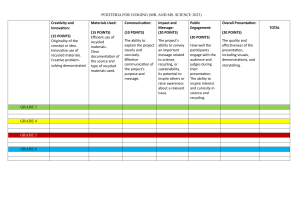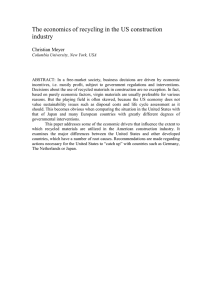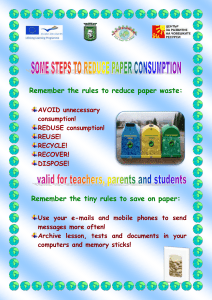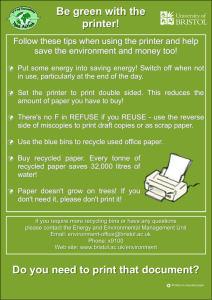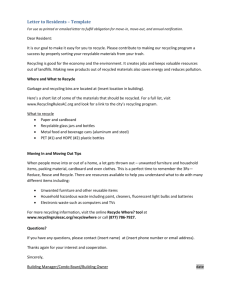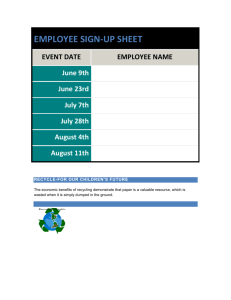Paper Making - STEM
advertisement
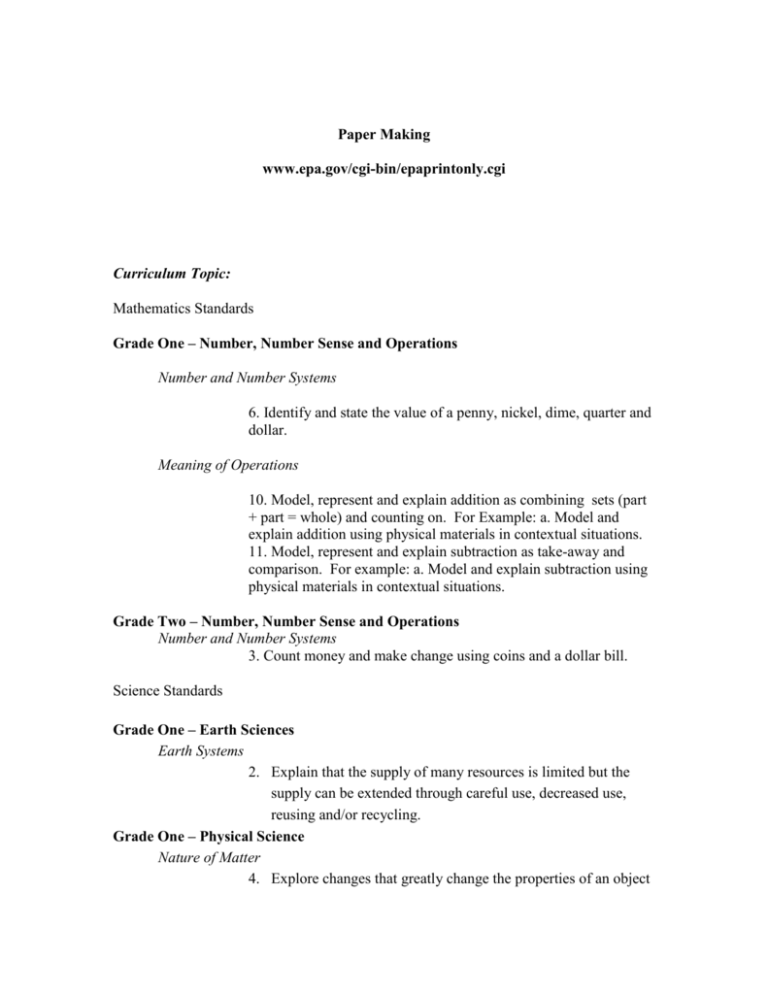
Paper Making www.epa.gov/cgi-bin/epaprintonly.cgi Curriculum Topic: Mathematics Standards Grade One – Number, Number Sense and Operations Number and Number Systems 6. Identify and state the value of a penny, nickel, dime, quarter and dollar. Meaning of Operations 10. Model, represent and explain addition as combining sets (part + part = whole) and counting on. For Example: a. Model and explain addition using physical materials in contextual situations. 11. Model, represent and explain subtraction as take-away and comparison. For example: a. Model and explain subtraction using physical materials in contextual situations. Grade Two – Number, Number Sense and Operations Number and Number Systems 3. Count money and make change using coins and a dollar bill. Science Standards Grade One – Earth Sciences Earth Systems 2. Explain that the supply of many resources is limited but the supply can be extended through careful use, decreased use, reusing and/or recycling. Grade One – Physical Science Nature of Matter 4. Explore changes that greatly change the properties of an object (e.g., burning paper) and changes that leave the properties largely unchanged (e.g., tearing paper). Grade One – Science and Technology Understanding Technology 2. Explain that when trying to build something or get something to work better, it helps to follow directions and ask someone who has done it before. Abilities To Do Technological Design 7. Explore that several steps are usually needed to make things (e.g., building with blocks). Grade Two – Scientific Ways of Knowing Science and Society 4. Demonstrate that in science it is helpful to work with a team and share findings with others. Target Grade Level: 1-2 Project Overview: Students will learn how paper is made, uses of paper, and why recycling paper is important. Students will learn how to make recycled paper from scrap paper found in the classroom and natural materials. The recycled paper will be used to create recycled paper products to give as gifts or sell. The money raised could be used to purchase a tree to be planted on school grounds or at a local park. Anticipated Time Required: 5-6 class periods Project Structure: classroom and small groups for the recycling paper activity Suggested Community Partners: school or local park Supplies Needed: examples of recycled paper products, kitchen blender, iron, cloth, strainer, jars, dish basin, sponges, window screen, newsprint Estimated cost to implement: medium Project Implementation: Research with students how paper is made using trade books from the library or visiting websites. Brainstorm with students a list of paper products people use. Have students keep a tally of the number of times and types of paper they use in a day. Graph the results. Talk about what happens to all the paper used. Investigate how much paper is used in the classroom for a week. Weigh it. Estimate how much is used in a school year. Brainstorm ways to recycle some of the paper used in the classroom. Have students work in small groups to follow the steps to recycle scrap paper. Students will decide what products they want to make with the recycled paper. They will have to decide if these products will be given to people in the school community, such as parent helpers, or sold to the school community. Profits could be used to purchase a tree to donate to the school or a local park. Student Assessment: graphs, posters with recycling messages Career Connections: 1. A chemist and a biologist work together to modify a common plant to provide more fiber that can be used for making paper. 2. A computer programmer designs a software package that allows local wste management firms to more efficiently recycle paper goods. 3. A mechanical engineer designs a machine that uses 40% less energy to convert wood pulp to paper. Additional Resources: The Lorax
